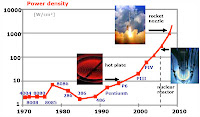 I love woodworking. Not saying that I’m great at it by any stretch, but I’ve found that in making cabinets, having the right tools makes all the difference in the world. It might be possible to find a table saw and router in the photonics center somewhere, but I haven’t seen any so far! More typically, high-level research calls for tools that are also highly technical, and which are based on science that’s not simple. To do their research, our group constructs microantennaes, like the ones shown in this image.
I love woodworking. Not saying that I’m great at it by any stretch, but I’ve found that in making cabinets, having the right tools makes all the difference in the world. It might be possible to find a table saw and router in the photonics center somewhere, but I haven’t seen any so far! More typically, high-level research calls for tools that are also highly technical, and which are based on science that’s not simple. To do their research, our group constructs microantennaes, like the ones shown in this image.
One thing that I found out is that the whole process  involves a lot more chemistry than I would have thought. At every step, safety precautions are taken just like the ones we do at school, and more in a lot of cases. Here, they use organic solvents, and do everything under a fume hood, which is good because grad students care about their health too.
involves a lot more chemistry than I would have thought. At every step, safety precautions are taken just like the ones we do at school, and more in a lot of cases. Here, they use organic solvents, and do everything under a fume hood, which is good because grad students care about their health too.
The first thing we did was to etch the pattern for our antennae using the electron beam machine. This was a lot like the process we used last year when we used photolithography to set up a design on a big silicon wafer. My friend John P. of Weymouth Physics fame did an awesome job explaining this process last year. And his blog is funny as all get out. Clean rooms will do that to people - it's gotta be the bunny suit.
After doing the first step with the e-beam machine, our chips had  lots of tiny bowtie structures etched onto the surface of the wafer. The next step was to turn the outlines of bowties into things with holes in them, because the holes are key for getting light energy to go nuts in the structure.
lots of tiny bowtie structures etched onto the surface of the wafer. The next step was to turn the outlines of bowties into things with holes in them, because the holes are key for getting light energy to go nuts in the structure.
The machine that does this is called the RIE, and it’s incredibly nasty – reactive ion etching would eat precise holes in your face if you climbed into the machine – wherever you didn’t have photoresistive material to protect you. Gas is introduced into the chamber, and it turned into a plasma by high-frequency radio waves. The plasma keeps eating silicon until you tell it to stop, so the timing of the operation is kind of a big deal.
 After the RIE, we went to my favorite step – the one with the pellets of 99.999% pure gold as spray paint. Gold’s used a lot in nanotechnology for lots of reasons – it interacts really strongly with light and doesn’t react with anything in people to name two. We like it for the first reason, and to get this operation to work, we first mounted our chips upside down to the plate you can see in the picture.
After the RIE, we went to my favorite step – the one with the pellets of 99.999% pure gold as spray paint. Gold’s used a lot in nanotechnology for lots of reasons – it interacts really strongly with light and doesn’t react with anything in people to name two. We like it for the first reason, and to get this operation to work, we first mounted our chips upside down to the plate you can see in the picture.
Next, we put a pellet of our pretty pure gold int o a little crucible you see here. After closing down the hatch, the machine got to work creating a super-high vacuum. That took a while, but after that step, things heated up. A heating element (tungsten, I think) gradually raised the temperature to the point that the gold could vaporize.
 Just like in the RIE machine, radio waves were used to excite the gold atoms, which helps them to vaporize into really tiny clusters.
Just like in the RIE machine, radio waves were used to excite the gold atoms, which helps them to vaporize into really tiny clusters.
 At the end of the process, we had coated our bowties with gold, and they were ready for us to check out on the SEM.
At the end of the process, we had coated our bowties with gold, and they were ready for us to check out on the SEM.
In signing off for now, I would like to extend my heartfelt thanks to Serap, Ali and Prof. Altug. You were all so gracious in reaching out in the midst of your very busy schedules to teach, explain and sometimes, explain again. I know that I've gained so much understanding about what makes a research operation like this one tick - I'm sure my students and members of our school's sci-tech club will benefit. Thanks again for your support and commitment!








